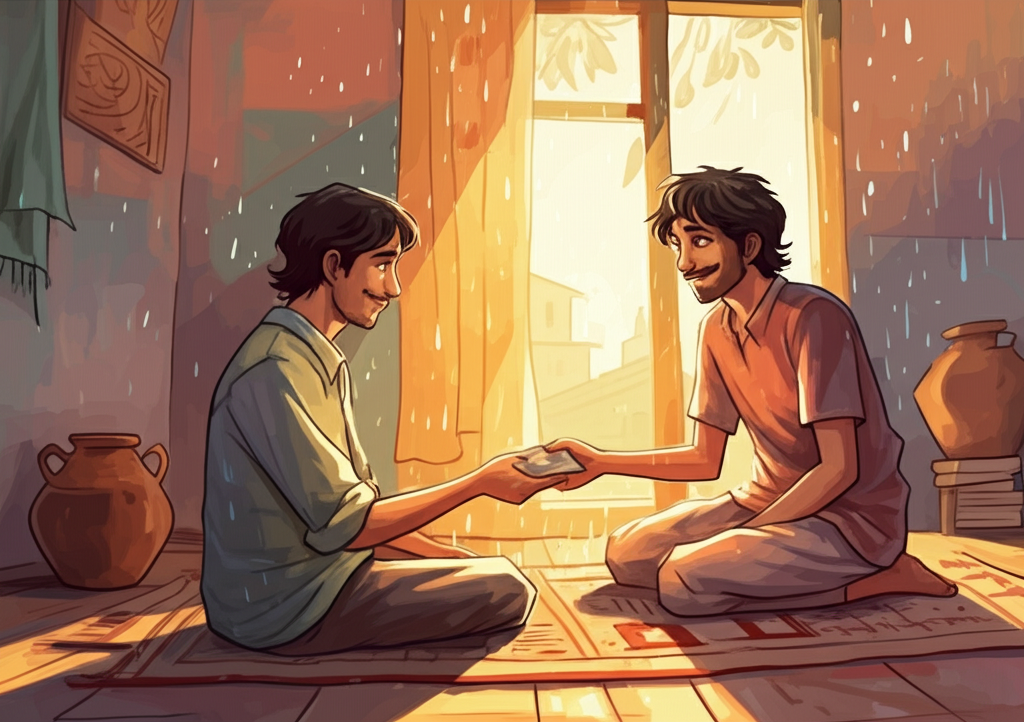I was still a thief when I met Romi. I was only fifteen, but I was good at it. Romi was watching a wrestling match when I walked up to him. He looked like he was about twenty-five, and he seemed friendly and easy to trick. I thought I could easily become his friend.
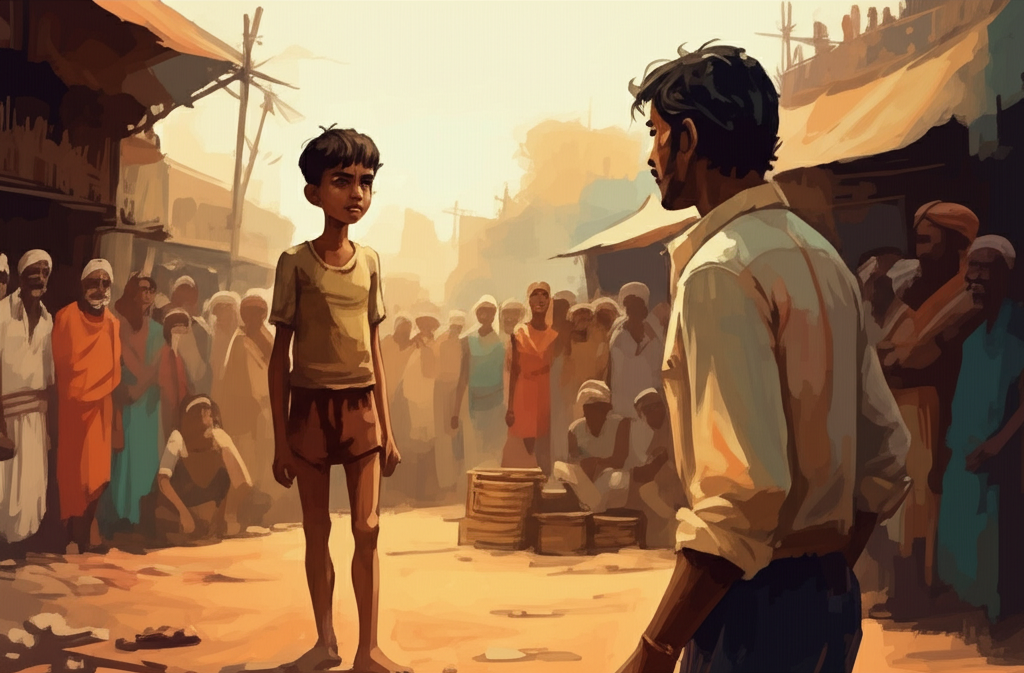
‘You look like you could wrestle, too,’ I said. Being nice is a great way to start a conversation!
‘So do you,’ he said back. That surprised me because I was pretty skinny back then.
‘Well,’ I said, trying to sound cool, ‘I wrestle a little.’
‘What’s your name?’ he asked.
‘Hari Singh,’ I lied. I changed my name every month to stay ahead of the police and the people I used to work for.
After that, Romi just watched the wrestlers. They were grunting, groaning, and pushing each other around. When Romi started walking away, I followed him.
‘Hello again,’ he said.
I gave him my best, friendliest smile. ‘I want to work for you,’ I said.
‘But I can’t pay you anything – at least not for a while.’
I thought about that for a second. Maybe I was wrong about him. ‘Can you feed me?’ I asked.
‘Can you cook?’
‘I can cook,’ I lied again.
‘If you can cook, then maybe I can feed you.’
He took me to his room above the Delhi Sweet Shop and told me I could sleep on the porch. But the food I made that night must have been really bad because Romi gave it to a stray dog and told me to leave.
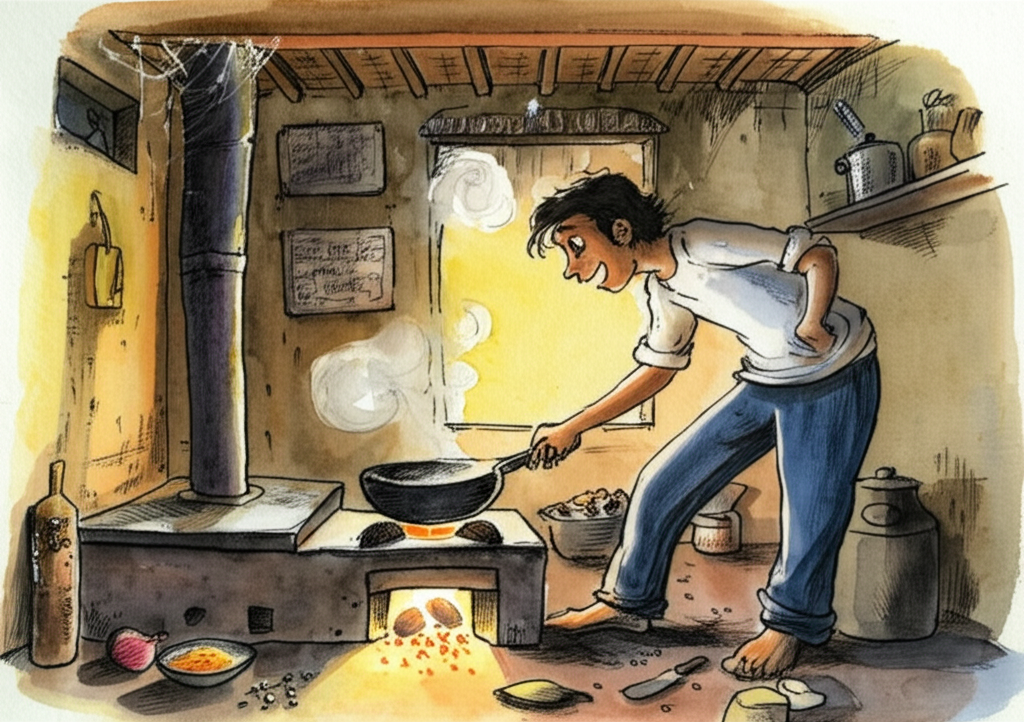
But I just stayed there, smiling as nicely as I could, and he couldn’t help but laugh.
Later, he said it was okay, he’d teach me how to cook. He also taught me how to write my name and said he’d soon teach me how to write whole sentences and do math. I was so happy! I knew that once I could write like a smart person, I could do anything.
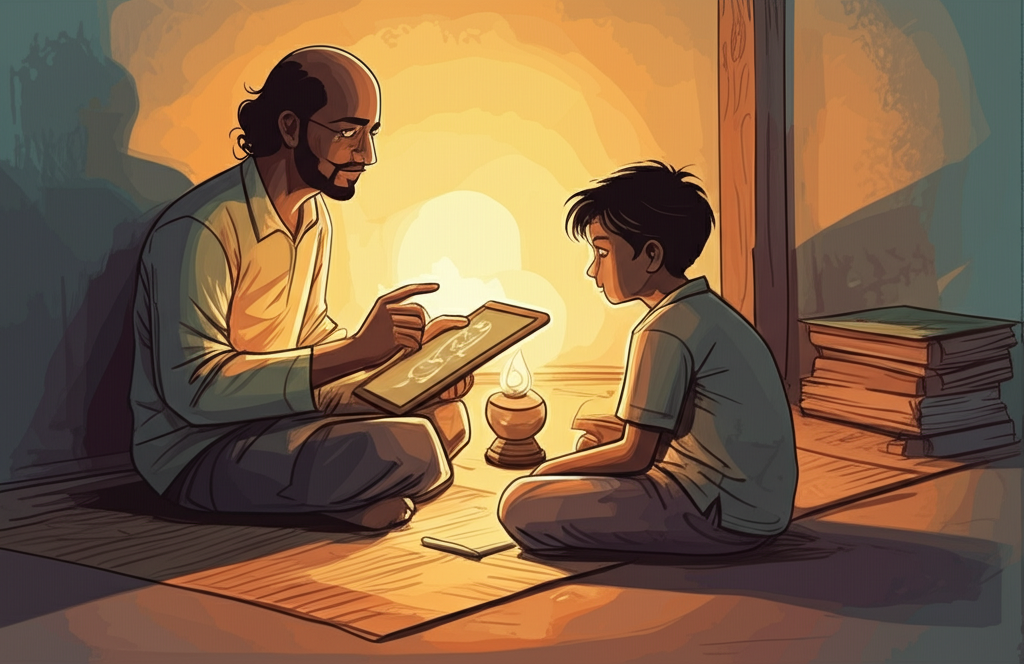
It was nice working for Romi. I made tea in the morning and then took my time getting food for the day. I usually made a little extra money for myself, like two or three rupees. I think he knew I did that, but he didn’t seem to care.
Romi made money sometimes. He would borrow money one week and lend it the next. He always worried about getting his next paycheck, but when it arrived, he would go out and have fun. He wrote for magazines in Delhi and Bombay, which was a strange way to earn a living.
One night, he came home with a small bunch of money. He said he had just sold a book to someone who publishes books. I saw him put the money in an envelope and hide it under his bed.
I had been working for Romi for almost a month. Besides cheating a little when I bought food, I hadn’t done anything really bad. I could do whatever I wanted, and Romi trusted me more than anyone I had ever met.
That’s why it was so hard to steal from him. It was easy to steal from someone mean. But stealing from a nice guy was a problem. And if he didn’t even notice I was stealing, it wouldn’t be exciting!
‘Okay, it’s time to do some real work,’ I told myself. ‘If I don’t take the money, he’ll just waste it on his friends. He doesn’t even pay me!’
Romi was sleeping soundly. The moon was shining on his bed. I sat on the floor and thought about what to do. If I took the money, I could catch the 10:30 train to Lucknow. I quietly got out of my blanket and sneaked over to the bed. I reached under the mattress and felt around for the money. When I found it, I pulled it out without making a sound. Romi sighed in his sleep and turned over. I got scared and quickly ran out of the room.
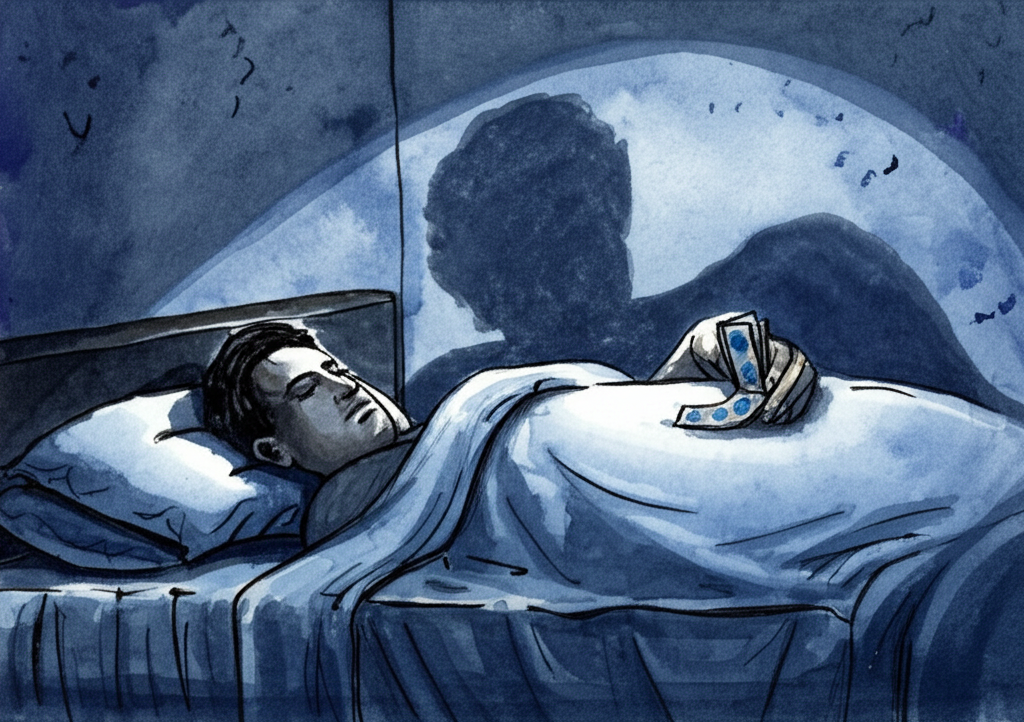
Once I was outside, I started running. I had the money tucked into my shirt pocket. When I was far away from Romi’s place, I slowed down and took out the envelope. I counted the money: seven hundred rupees! I could live like a king for a couple of weeks!
When I got to the train station, I didn’t stop to buy a ticket (I had never bought a ticket before). I ran straight to the train platform. The Lucknow Express was starting to move. It wasn’t going very fast yet, and I could have jumped onto one of the cars. But I stopped – I don’t know why – and I missed my chance to get away.
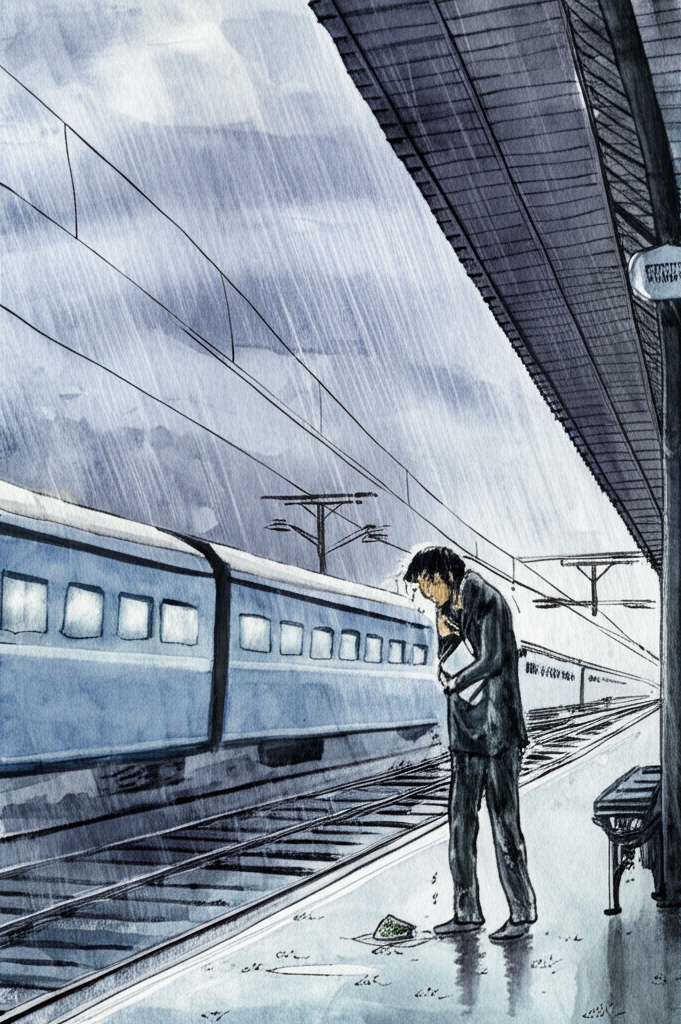
After the train left, I was all alone on the platform. I didn’t know where to go. I didn’t have any friends because I thought friends were more trouble than they were worth. And I didn’t want to stay at a hotel because people might ask questions. The only person I really knew was the guy I had just stolen from. I left the station and walked slowly through the market.
I had watched people’s faces after they found out something was stolen. Mean people looked scared. Rich people looked angry. Poor people looked sad. But I knew that Romi would just look a little sad – not because he lost the money, but because I broke his trust.
It was a cold night – November nights can be chilly in northern India – and it started to rain, which made me feel even worse. I sat down under the clock tower to get out of the rain. Some homeless people were lying next to me, all wrapped up in their blankets. The clock showed midnight. I felt for the money. It was all wet.
Romi’s money. In the morning, he probably would have given me five rupees to go to the movies. But now I had all of it! I didn’t have to cook, buy food, or learn to write sentences.
Sentences! I had forgotten about them. I knew that writing sentences could one day make me more money than this. Stealing was easy. But being a really great, smart, and respected person was something else. I should go back to Romi, I thought, even if it was just to learn to read and write.
I hurried back to his room, feeling really nervous. It’s much easier to steal something than to give it back without getting caught.
I opened the door quietly and stood in the doorway. The moon was shining. Romi was still asleep. I tiptoed to the bed and reached for the money. I could feel his breath on my hand. I stayed still for a few seconds. Then I felt for the edge of the mattress and slipped the money back under it.
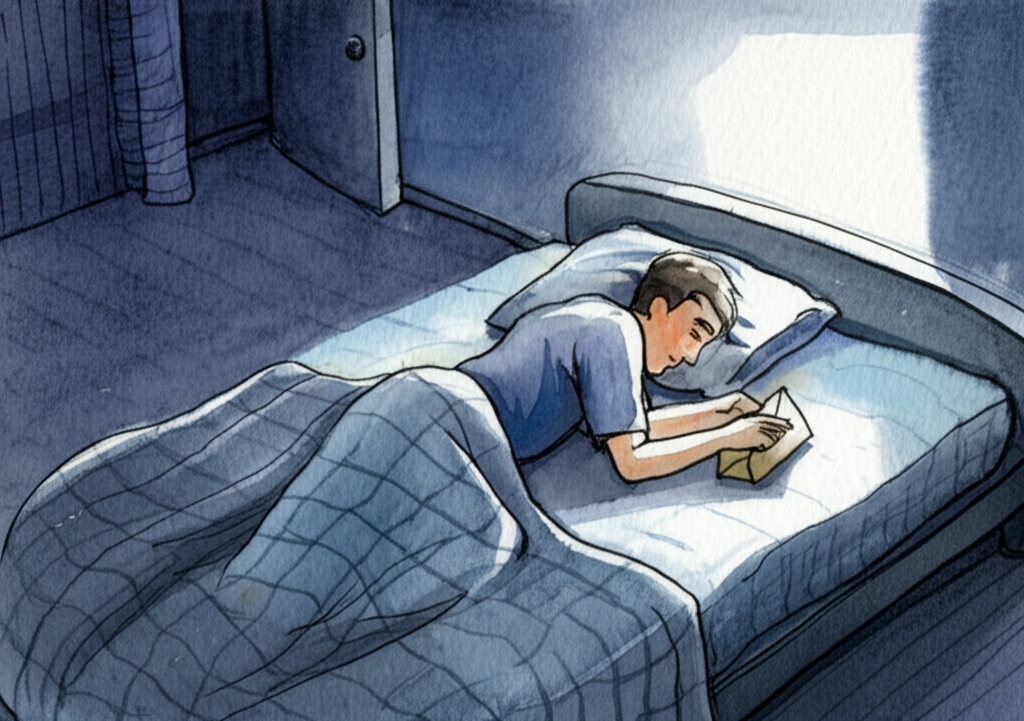
The next morning, I woke up late. Romi had already made tea. He held out his hand to me. There was a fifty-rupee bill in his fingers. My heart sank.
‘I made some money yesterday,’ he said. ‘Now I can pay you regularly.’
I felt so much better! But when I took the money, I saw that it was still wet from the rain. So he knew what I had done. But he didn’t say anything about it.
‘Today we’ll start writing sentences,’ he said.
I smiled at Romi in my friendliest way. And the smile just came naturally, without me even trying.
